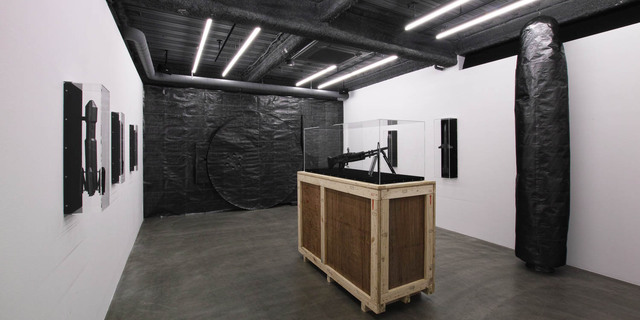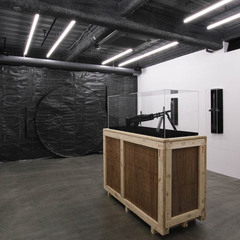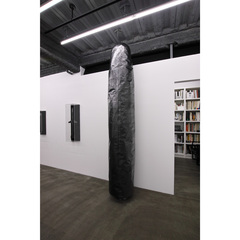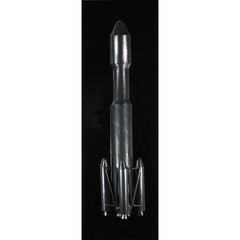
Main Gallery
M60
Manabu Hasegawa
2015.3.27 Fri-2015.4.25. Sat
Tezukayama Gallery will present, from Friday 27 March until Saturday 25 April, a solo exhibition by Manabu Hasegawa titled “M60”.
Hasegawa graduated from Tama Art University with a major in printmaking in 2000. He has been based in the center of Tokyo since then. He won the “Kirin Art Award 2001” Excellence Award, was awarded the Special Prize second place at the 2010 “13th Taro Okamoto Contemporary Art Award”, and won Best Work at the “SOFA NY” in 2012. In recent years his work has been receiving attention both here in Japan and abroad.
Hasegawa’s unique style involves the combination of drawing techniques with sculpture. He creates paper models given life by the use of pencil, and, with a deep sense of craftsmanship, molds and shapes objects such as knives, guns, and bullets. It can be said that the fact those are created with such fragile and transient materials as “pencil and paper”, a strong contrast is embodied in the work.
Behind his meticulous sculptures, there lies an influence from religion and Japanese spirituality. In a quest to discover his own identity, Hasegawa has been exposed to several religions and philosophical ideas. Then he encountered the ‘Tale of Heike’, incorporating elements of Buddhist and Shinto beliefs, which run alongside each other, with differing beliefs but ultimately one. Hasegawa is interested in this balance of “onmyou” (yin and yang), and also the view of the world expressed in this old Japanese tale. Its spiritual metaphors and philosophies gradually made their way into his work and his life.
“The sound of the Gion Shōja bells echoes the impermanence of all things” is a quote from the beginning of the ‘Tale of Heike’. The Taira, or “Heike” Clan, due to their own greed and pride, fell from extreme glory, outlining the Buddhist teachings on the impermanence of all things, a key element in Buddhist thought and belief. A day disappearing, as if part of a dream, has beauty. Just as the ephemeral qualities of the rice crop, the Japanese people are, themselves transient. Everything in this world has impermanent beauty. In modern times, it is difficult to define or envision the transience of time. Even things that change their shape, will eventually fade away.
‘The Tale of Heike’, having been handed down from generation to generation and mixed with Hasegawa’s impression of the tale, a philosophy born from the aesthetics of Japanese spiritual thinking, express a sense of impermanence in our modern society, as seen through Hasegawa’s sculptures.



